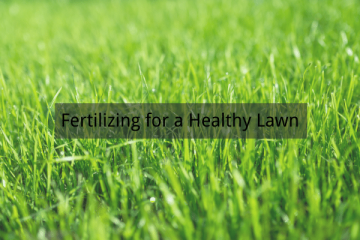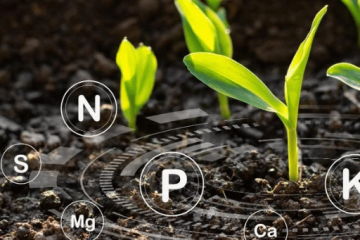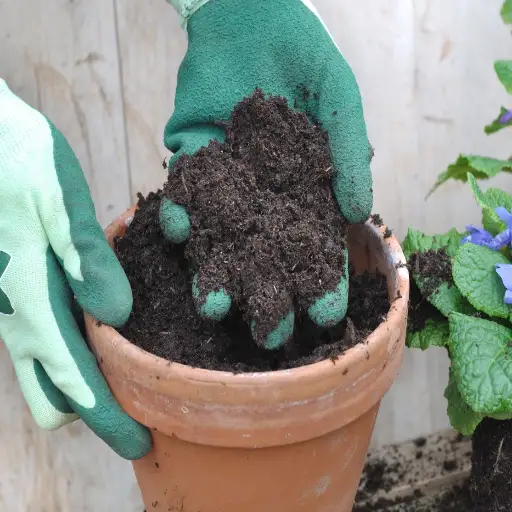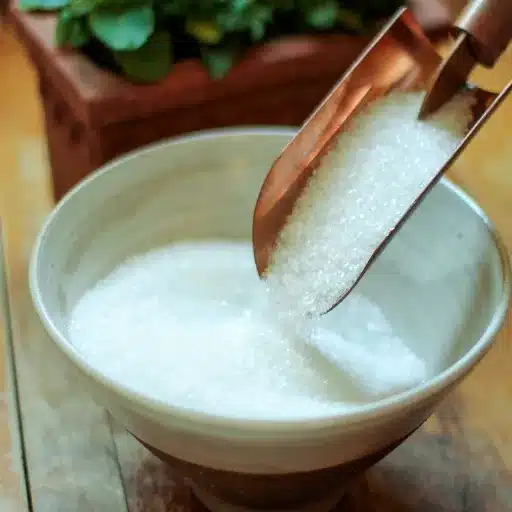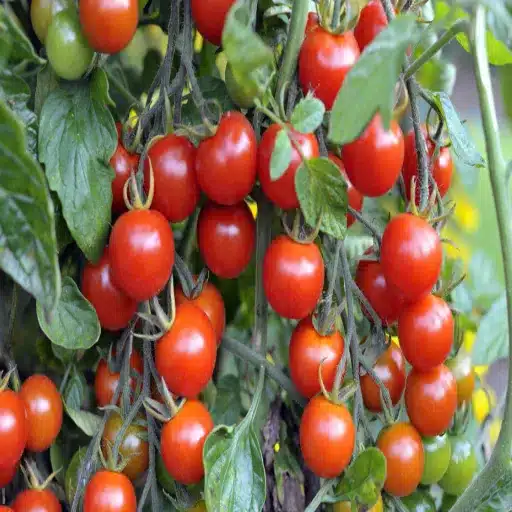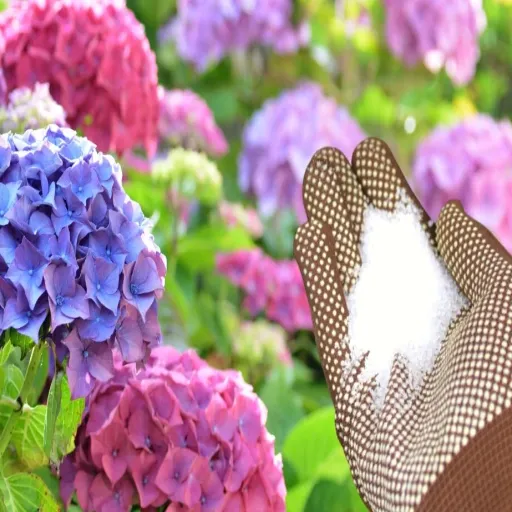Caring for a healthy and thriving garden often involves exploring natural and accessible solutions to improve plant growth and combat potential issues. Among the wide range of natural remedies available, Epsom salt and hydrogen peroxide have gained significant attention for their potential benefits when used in home gardening. This article examines the scientific basis, practical applications, and associated advantages of mixing Epsom salt and hydrogen peroxide for various gardening needs. By understanding the properties and functions of these two compounds, gardeners can make informed decisions about how to incorporate them effectively into their plant care routine.
How Does Epsom Salt Benefit Plants?

How to Use Epsom Salt for Optimal Plant Growth?
Epsom salt may be applied in magnesium sulfate (MgSO4·7H2O) form but will only be useful if proper attention has already been given to the specific needs of the target plants and the dosage is appropriate. Epsom salt as magnesium sulfate is beneficial for plant growth since it supplies critical ions of magnesium and sulfur used during photosynthetic as well as enzymatic activities.
- Foliar Spray: This approach can be applied by adding 1 or 2 ounces of Epsom salt to a gallon of water and spraying the liquid on the foliage. This approach will allow fast absorption by the plant thereby correcting magnesium deficiencies especially if applied once every two weeks.
- Soil Amendment: During planting or when it is clear that there are signs of nutrient deficiency, Epsom salt can be applied by incorporating one tablespoon into the soil at the vicinity of the plant’s stem where the root zone is located. This technique facilitates magnesium and sulfur incorporation at the root zone.
- Seed Germination Aid: One teaspoon of Epsom salt could also be added onto a gallon of water to soak seeds prior to planting in order to enhance the seedlings strength during their early development stage.
Applying excessive doses will lead to imbalance of nutrients like potassium and calcium because an oversupply of magnesium can create additional problems. These suspicions together with the well being of the plant and soil should be monitored when justification of the dosages is needed.
Can Adding Epsom Salt Improve Magnesium Deficiency?
Yes, applying Epsom salt or magnesium sulfate will help rectify deficiency in magnesium, provided that it is applied properly and at the right time. Magnesium plays a critical role in the formation of chlorophyll alongside the processes of photosynthesis as well as enzymatic activity within a plant. If magnesium deficiency is suspected, Epsom salt may be used in water to create a magnesium source.
- Application Rate: For foliar spraying or soil drenching, 1-2 tablespoons per gallon of water is recommended. This concentration permits the absorption of magnesium while avoiding overdosing the plant with nutrients.
- Frequency: Depending on how badly plants are deficient and how well the plants are recovering, dosage should be every 4-6 weeks.
- Diagnosis: Magnesium deficiency can be diagnosed via interveinal chlorosis, which is characterized by the yellowing of older leaf tissue that is found between leaf veins or through soil examination while ensuring that other deficiencies or problems in pH are not present.
- pH Consideration: The soil pH needs to be checked to verify that it is in the appropriate range for the absorption of magnesium. The ideal range is generally between 6.0-7.0, as outside these numbers, nutrients cannot be absorbed.
Following these instructions means that Epsom salt can be used to ease magnesium deficiency safely and with great efficacy while helping the plant’s health. Solving a problem and watching the development over time is important to prevent excess use and nutrient disorder.
Why Use Hydrogen Peroxide for Plants?

How Does Hydrogen Peroxide Affect Plant Health?
Hydrogen Peroxide, otherwise referred to as H2O2, can improve the health of plant life by making oxygen more accesible, controlling possible pathogen outbreaks and facilitating root growth.
- Releases Oxygen: hydrogen peroxide can decompose into water and oxygen and its breakdown improves soil aeration, meaning stronger root growth within compacted or oxygen deficient soils.
- Controls Pathogens: H2O2 can control and manage both fungal and bacterial infections due to its lacking antimicrobial properties. Controlled concentrations of Hydrogen peroxide disrupts a wide range of pathogens cell membrane which does not harm the plant allowing it to flourish.
- Supports Seed Germination: Alongside increased germination rates, hydrogen peroxide can also soften the seed coats while elimiaonting surface pathogens and is used during seed preparation.
- Prevents Root Rot: With the ability to lessen suppressing anaerobic microbes, hydrogen peroxide can mitigate root rot from poorly drained soils.
Although Hydrogen Peroxide can hold many benefits, its improper or excessive use may lead to damage. Adhering to precise dilutions and application frequencies can lead to optimal results.
What Are the Benefits of Using Hydrogen Peroxide on Plants?
Due to its properties and careful application, hydrogen peroxide ( H₂O₂ ) offers many advantages to plants.
- Advanced Oxygen Supply: Hydrogen peroxide decomposes quite freely into water (H₂O) and oxygen (O₂), which serves as an additional oxygen supply for plant roots. This is vital in cases of waterlogged soils and soils that lack oxygen. 3% concentration of hydrogen peroxide diluted at a ratio of 1 teaspoon per gallon of water is very helpful in aerating the soil.
- Soil and seeds disinfection: Its antimicrobial actions aid in the obliteration of harmful bacteria, fungi, and pests when employed with proper dilutions. A soak for seeds in the proper mixture of 3” hydrogen Peroxide is 1 part H₂02 to 10 parts of water and helps in sanitizing the seeds without affecting their germination potential.
- Root development at accelerated rates: The additional oxygen facilitates root cell division, which leads to enhanced and faster root development. A foliar application in the form of a spray works effectively when diluted at the ratio of 1 tablespoon of three percent Hydrogen Peroxide to a gallon of water.
- Fungi and Pathogen Management: Hydrogen peroxide attacks microbes existing in anaerobic environments, such as those responsible for root rot and powdery mildew. For fungal control, the recommended treatment is a 3% hydrogen peroxide solution diluted 1:4 with water to address early outbreaks at the leaves or soil level.
Following the appropriate application timing along with dilution ratios is essential in obtaining maximum advantages while avoiding damage to plant tissues through excessive oxidation. Too much of it or high doses could be harmful and result in cellular damage or alteration of the soil microbiome.
Can You Mix Epsom Salt with Hydrogen Peroxide for Plants?
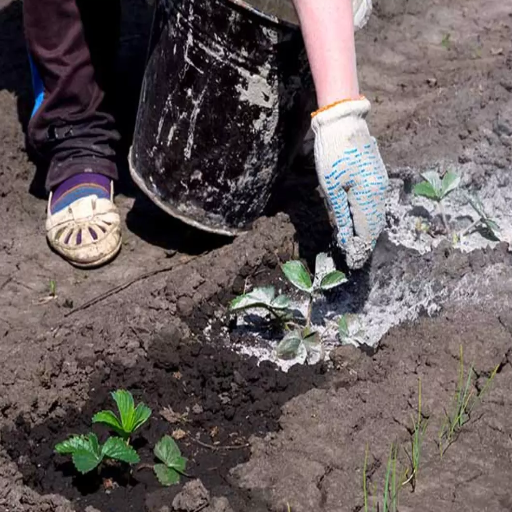
Is It Safe to Mix Epsom Salt with Peroxide?
To achieve optimal results wherever necessary and reduce the likelihood of damage, combining Epsom salt (magnesium sulfate) with hydrogen peroxide must be done with utmost care. Each substance has certain roles it plays: magnesium and sulfur from Epsom salt aid in plant growth, while hydrogen peroxide helps with the ventilation of the soil and the elimination of harmful microorganisms. Without precise ratios, there is a risk of chemical interactions, which may cause the components to be inefficient or even be harmful to plants.
- Epsom Salt Concentration: To prevent an excess intake of magnesium that changes the pH of the soil or disrupts nutrient balance, no more than 1-2 tablespoons per gallon of water should be used.
- Hydrogen Peroxide Dilution: In order to preserve plant roots and establish better Microbial Ecosystems, the 3% Hydrogen peroxide solution must be diluted at the ratio of 1 part Hydrogen peroxide to 4 parts water.
- Mix and Apply Immediately: Chemical responses must be avoided and so the mixture should be applied immediately after being created to preserve potency.
- Test on a Small Area: A mixture of this nature should first be tested on a small area before wide spread incorporation is done to ensure unwanted side effects do not take place.
In the absence of proper restrictions, this combination could offer some much-needed help, however, its overuse or incorrect amalgamation could harm plant cells or disrupt the soil microbiome. Always stick to accurate doses and check the outcome for the sake of plant wellbeing and soil condition.
What Is the Best Way to Mix Epsom Salt and Hydrogen Peroxide?
When integrating Epsom salt with hydrogen peroxide, the former requires salt’s measurement to be exact alongside the use case where it will be used; this will help in ensuring proper mix.
- Hydrogen Peroxide Dilution: You should work with a 3% hydrogen peroxide solution if you want to be safe and effective. If you use higher concentrations, it can be dangerous to plants and soil-residing microorganisms. Take 3% hydrogen peroxide’s one cup (240 ml), and add it to one gallon (3.8 liters) of water as the base solution.
- Addition of Epsom Salt: Add magnesium sulfate content that is around 1 to 2 tablespoons (15-30 grams) and mix thoroughly with the previously mentioned hydrogen peroxide. This combination will help the solution work best for plant growth without the risk of over-fertilization.
- Full Mixture: Stir the combined solution well to ensure the content is mixed evenly, such that the Epsom salt is fully dissolved and uniformly distributed.
- Instructions for Use: If you are planning to use the solution, apply it immediately to soil around the plant’s roots, or leaves if foliar feeding is necessary. Do not save the mix as it has potential to become completely useless after a while; hydrogen peroxide deteriorates over time and heat or light will make it happen faster.
By having the proper formula for plant growth and garden well-being, the whole biological wealth is ensured to be intact while minimizing damage.
How Does the Combination Impact Plant Growth?
The blending of hydrogen peroxide and water has a positive effect on plant growth since it increases the amount of oxygen in the soil, resulting in improved root growth and the reduction of harmful microorganisms. The decomposition of hydrogen peroxide releases oxygen molecules, which causes an increase in soil aeration while also improving nutrient absorption by the roots. This is especially true for soils that are compacted or poorly drained. Also, the solution acts as a mild disinfectant, which reduces fungal and bacterial growth that is detrimental to plant growth as well.
- Hydrogen Peroxide Concentration: Use a 3% hydrogen peroxide solution diluted at a ratio of one teaspoon per cup of water. This is optimal in terms of safety and effectiveness for plants.
- Frequency of Application: The solution may be applied once every two weeks to maintain a balance in oxygen levels, pathogen control and stress on the plant.
- pH Levels: The mixture should be neutral to slightly acidic, 6.0 to 7.0 in pH, which most species of plants would be able to absorb at the highest rates.
These conditions not only explain the efficacy of the blend but, when applied carefully, save plant health.
What Are the Benefits of Epsom Salt and Hydrogen Peroxide Combination?

Can the Mixture Prevent Root Rot and Pests?
When applied properly, the mix of Epsom salt and hydrogen peroxide can serve as an effective preventative measure for root rot and pest infestation. For example, the use of hydrogen peroxide would oxidize and add extra oxygen to the soil, thus mitigating the chance of root rot occurring. To achieve the best results, I suggest using a 3% hydrogen peroxide solution that is diluted in a 1 part hydrogen peroxide to 10 parts water ratio.
Furthermore, magnesium sulfate makes Epsom salt capable of fortifying plant cell walls and enhancing the development of roots. This indirectly strengthens the plants’ ability to fight off fungal infections that are related to root rot. To avoid over-fertilization while ensuring magnesium sufficiency, I personally dissolve 1-2 tablespoons of Epsom salt to one gallon of water.
Moreover, hydrogen peroxide in the mixture can act as a very mild disinfectant to help eliminate soft-bodied pests such as fungus gnats. Through moderate and infrequent application—no more than every two to three weeks—I’ve discovered it serves to maintain soil health while avoiding overexposure.
Does It Enhance Nutrient Uptake in Plants?
I have found that Epsom salt and hydrogen peroxide, when utilized in my plant care routine, can improve nutrient absorption in plants. Magnesium sulfate (Epsom salt) contains magnesium, which is necessary for the production of chlorophyll. Epsom salt’s magnesium also enables a plant to take in phosphorous and nitrogen, which are vital nutrients.
- Epsom salt usage: 1-2 tablespoons in a gallon of water, four to six weeks interval; to prevent Epsom Salt’s over-fertilization of plants.
- Hydrogen peroxide mix: 1 tablespoon (3% concentration) for a gallon of water; use every two to three weeks to prevent destructive microbes and for root oxygenation.
All of these measures ensure that the plants are better able to utilize the nutrients without compromising the soil’s microbial balance.
How to Properly Use Epsom Salt and Hydrogen Peroxide in the Garden?

What Are the Recommended Soil Mix Ratios?
When using Epsom Salt and hydrogen peroxide for soil treatment, their mixing ratios need to be very specific to prevent overuse as well as ensure proper health to the plants.
- Epsom Salt: For every gallon of water, mix 1 tablespoon of Epsom Salt. Use this solution for no more than once every six weeks. This helps in managing the delivery of magnesium and sulfur while improving the production of chlorophyll as well as nutrient uptake, avoiding any nutrient imbalance or salt accumulation in the soil.
- Hydrogen Peroxide: Use 1 table spoon of hydrogen peroxide per gallon of water for regular treatment. Use every two to three weeks to oxygenate the root zone and slow down harmful microbe activity. Such dilution permits safe levels of oxygen for the roots while avoiding chemical stress on the plants..
These ratios are based on common horticultural methods and avoids any potential toxic changes or structures that could prove harmful to soil microbiology as well as plant growth.
How Frequently Should You Apply the Mixture?
Under normal circumstances, I suggest that the mixture be applied every two to three weeks. This frequency helps to optimally aerate the root zone while achieving a balanced microbial neutralization.
- Dilution Ratio: The mixture should be diluted 1:10 with water. This strategy mitigates root chemical stress while enhancing oxygenation, ensuring the application is root-friendly.
- Microbial Control: Best within this period, harmful microbes will not re-establish and will be neutralized without disrupting beneficial microorganisms.
- Absorption Rate: A schedule of two to three weeks matches the average nutrient and oxygen absorption rate in most soils, guaranteeing the desired effect without causing over saturation.
These factors have been developed following normal soil treatment systems and aim to ensure plant and soil health over time.
Reference sources
Frequently Asked Questions (FAQs)
Q: What are the benefits of using Epsom salt for plants in the garden?
A: Epsom salt, which is magnesium sulfate, can help improve the growth of plants by providing essential nutrients. It is particularly effective in increasing magnesium levels, which is crucial for photosynthesis and helps plants absorb nutrients like nitrogen and phosphorus better.
Q: How does hydrogen peroxide enhance the growth of plants?
A: Hydrogen peroxide can enhance plant growth by providing a source of oxygen to the root system. It helps break down organic material, thus improving soil aeration and preventing issues related to root rot and other diseases caused by overwatering.
Q: Can I mix hydrogen peroxide and Epsom salt for plants?
A: Yes, you can mix hydrogen peroxide and Epsom salt for plants. This combination can be used to enhance nutrient absorption and oxygenation in the soil, leading to healthier plants. However, it is important to dilute both substances properly to avoid harming the plants.
Q: How much Epsom salt per gallon of water should be used for a fertilizer spray?
A: Typically, you should use about 1 tablespoon of Epsom salt per gallon of water for a foliar spray. This solution can be applied to leaves of plants like tomato plants and pepper plants to boost their magnesium intake.
Q: How should I apply hydrogen peroxide to potted plants?
A: For potted plants, it’s recommended to use a diluted solution of hydrogen peroxide. Mix about 1 teaspoon of hydrogen peroxide per cup of water, and use this solution in a spray bottle to mist the soil. This helps prevent pests like fungus gnats and improves root health.
Q: Is Epsom salt safe for house plants?
A: Yes, Epsom salt is generally safe for houseplants when used in moderation. Adding Epsom salt to plants can help improve their nutrient uptake and overall health, but it is important to avoid overuse, as too much Epsom salt can lead to nutrient imbalances.
Q: What feedback and help can Epsom salt provide for pepper plants?
A: Epsom salt can provide essential magnesium to pepper plants, helping them produce more chlorophyll and improving their nutrient uptake. This can result in stronger growth and better yields during the growing season.
Q: Can peroxide and Epsom salt help with fungus issues?
A: Yes, using peroxide and Epsom salt in the garden can help manage fungus issues. Hydrogen peroxide acts as a natural fungicide, killing fungal spores on contact, while Epsom salt can improve plant health, making them more resistant to fungal infections.
Q: How do pests like fungus gnats respond to hydrogen peroxide treatments?
A: Pests like fungus gnats are adversely affected by hydrogen peroxide treatments. Applying a diluted hydrogen peroxide solution to the soil can help eliminate larvae and reduce gnat populations, as it oxygenates the soil and disrupts their life cycle.

